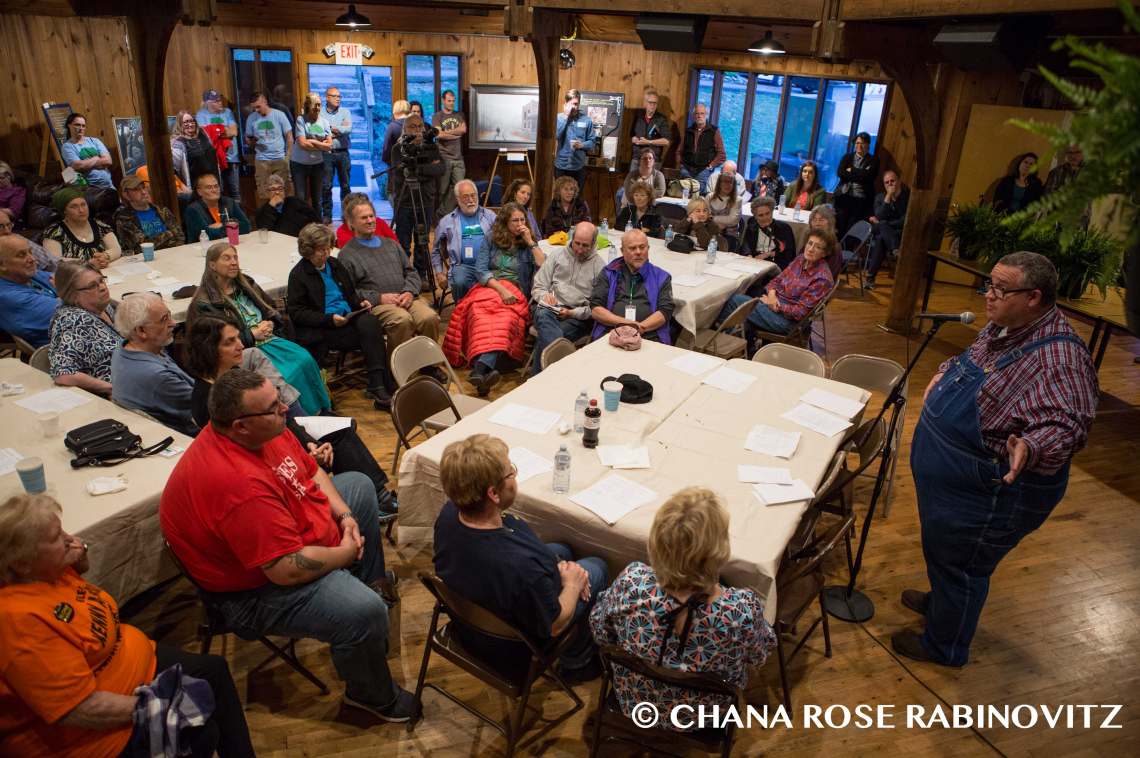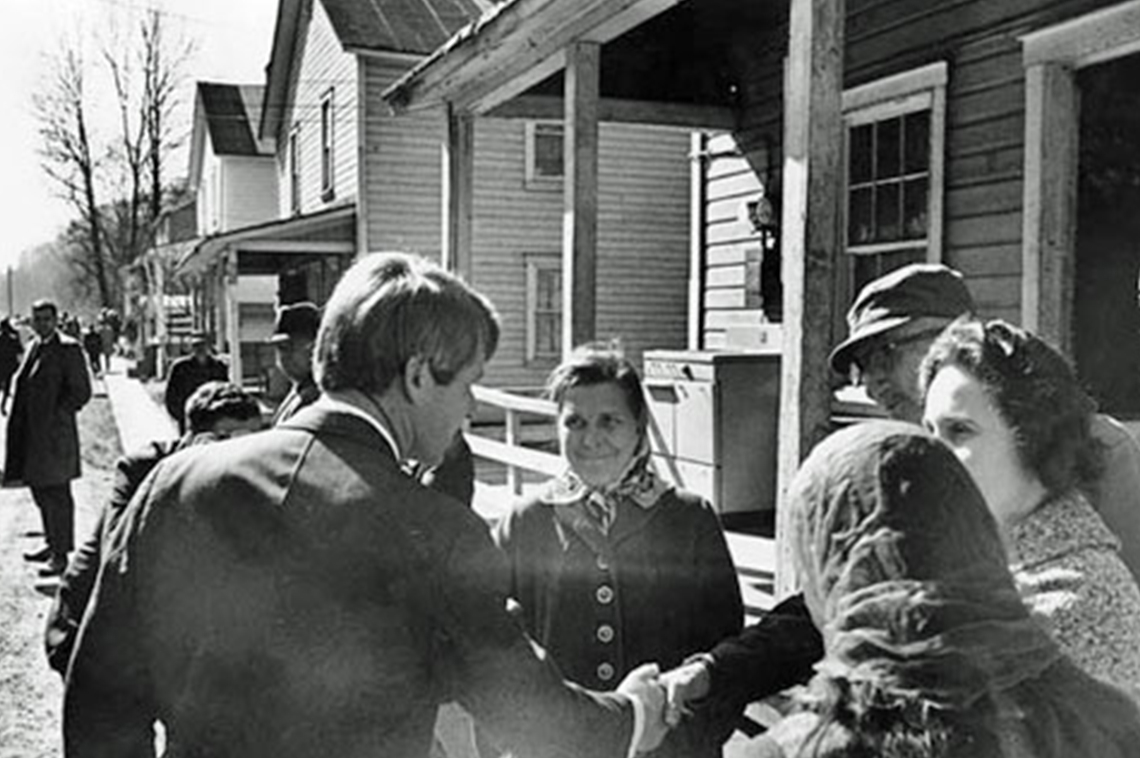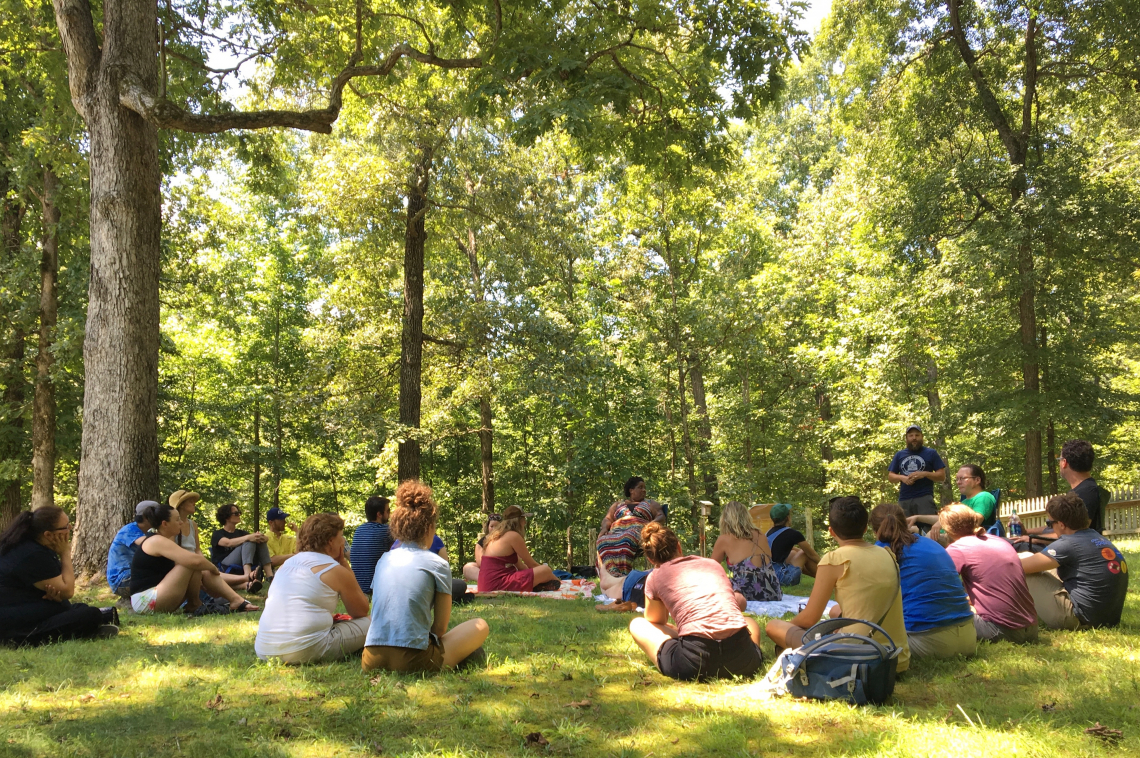


This is the third and final in a series of guest posts by Judi Jennings called “Asking Tough Questions About Creative Placemaking.” Her posts highlight analysis and action ideas from interviews with some of the best minds in placemaking and philanthropy. The interviews are part of the Creative Placemaking From the Community Up project, which is supported by the National Endowment for the Arts Our Town Knowledge Building program.
I first heard the term “unbuilt environment” from Gary Gaston, CEO of the Nashville Civic Design Center. Gaston is from rural Tennessee and holds degrees in architecture and community development. He sees that environments can be both “built” (shaped by human-made structures) and “unbuilt” (shaped by culture and/or nature), and he takes into account how both forces influence communities.
Gaston and I met as part of a Pew Health Impact Project cohort addressing health disparities in six Southern states and Appalachia. The Civic Design Center project tested strategies developed in Nashville in two rural areas, where Gaston said they quickly saw the importance of the rural unbuilt environment. A river in Nashville, for example, could be seen as a site for built environment projects to advance economic development. That same river in a rural area might be valued as an unbuilt site of cultural memories and communal recreation.
This finding shows that nature itself can play defining roles in placemaking, especially in rural areas. Kentucky writer Wendell Berry—author of the 1977 book The Unsettling of America: Culture & Agriculture, which describes how rural residents meld land, work, and culture—offers an expansive list of nature’s components: “The atmosphere, the earth, the water and the water cycle, the ecosystems and the ecosphere.” In Kentucky, as Gaston found in Tennessee, nature dovetails with cultural customs to form and define the whole of the unbuilt environment. In the western part of the state, for example, an open meadow becomes a public meeting space to share memories and create social connections as part of the Rural Urban Exchange.
When it comes to the public health aspects of creative placemaking efforts, researchers have long understood how the built environment significantly affects people’s health. By analyzing deep data on urban neighborhoods, for example, the Robert Wood Johnson Foundation documented how people’s zip codes are more important than their genetic codes in determining overall health. Yet, as Gaston’s work in Tennessee shows, unbuilt environments—encompassing both culture and nature—can also affect creative placemaking efforts, and therefore public health outcomes.
In a recent study focusing on Lenoir County, North Carolina, a team of social science researchers used an innovative photography-based process that identified the cultural, unbuilt environment as a key component in determining health outcomes. The team found that: “Even when physical activity opportunities existed in this rural county, they were rarely used. This may be the result of culture (‘unbuilt environment’) that disfavors physical activity even in the presence of features that allow it. Policies promoting built environments designed for healthy lifestyles should consider local culture (shared styles, skills, habits, and beliefs) to maximize positive outcomes.” In other words, the physical human-made structures that had been built in Lenoir County to encourage residents to exercise did not match the culture of the place; therefore, the structures went unused. These locally based findings open much larger considerations about the intersectional dynamics that link placemaking to built and unbuilt environments and health.
The Letcher County, Kentucky, Culture Hub is, to me, a place where these intertwining dynamics can be seen in daily life. I consider the county-wide hub to be a naturally occurring rural cultural district, grounded in rich folk traditions and geographic assets—and also facing equally strong social, economic, and health challenges. Over the last two years, as a creative placemaking project of Appalshop funded by an ArtPlace America grant, local residents successfully worked together to connect their post-coal natural environment with their traditional and contemporary art-making unbuilt environment. As shown in this interactive visualization, putting these components together helps create new pathways to positive change.
Last spring, as I drove to the Letcher County Culture Hub Celebration, the power of the surrounding natural environment was undeniable. I wound my way to the Cowan Community Center on a two-lane road that runs beside a curving creek bordered by blooming redbud trees. My family roots lie deep in eastern Kentucky, and I could feel the beauty of the land in my bones. I could also recall hearing Nell Fields, who grew up and still lives on Cowan Creek, talk about Robert Kennedy’s visit to Letcher County in 1968. Although a schoolgirl then, she vividly remembers how Kennedy cared about the people he met here and spoke of systemic economic and social change. Now, Nell works at the Cowan Community Center and welcomed visitors to the Culture Hub Celebration.
There was a lot to celebrate that spring day on Cowan Creek. Three new businesses were being incubated. Existing economic and social enterprises were being revitalized and expanded. Two long-standing cultural institutions, the Carcassonne Square Dance and King’s Creek Bluegrass Festival, were newly financially stable and planning for the future. A wide array of arts and story-sharing activities inspired new thinking about what is possible for the community and region.
A staged reading of Performing the Future, an Appalshop Roadside Theater play, was a highlight of the afternoon. The play was derived from story circles; local residents, including Nell, spoke their words. The reading gave voice to the pains of poverty and addiction as well as hope for recovery. A vigorous dialogue among attendees followed, with one observer characterizing the play and discussion as creating a safe space to help rebuild the fabric of possibility for unity, healing, and progress here.
To complete this last blog in my series, I felt honor-bound to seek a trusted urban reality check, so I called designer and planner Damon Rich. I admired his work even before he became a certified genius. I trust him because his stated goals are to design and build places that are more democratic and accountable to their residents.
Rich strongly agrees with the importance of connecting culture and health, especially mental health, in the planning and design of both urban and rural environments. He sees how exploring the natural environment can be a useful bridge between urban and rural communities because these spaces are so important to both. He also pointed out that while the term built environment is often used in planning and design work, it might not be familiar to folks outside those fields. The term unbuilt environment is less widely used and understood, even in those fields—although no less important to rural folks. So creative placemakers: let’s all do our best to communicate clearly!
Speaking with Rich made me realize that now is a good time for all of us in the field of creative placemaking to reassess some of our fundamental assumptions and ask new questions. What can we learn about the roles of culture and health in creative placemaking by looking at rural places? What do rural communities have in common with disinvested suburban spaces, like Ferguson, Missouri (a suburb of Rich’s hometown of St. Louis)? Learning about the rural unbuilt environment isn’t just about creative placemaking, though. In the words of Wendell Berry: “To cherish what remains of the Earth and to foster its renewal is our only legitimate hope of survival.”
About Judi Jennings
Born and bred in Kentucky, Jennings earned a PhD in 18th century British history; worked at Appalshop arts and media center; served as founding director of the University of Louisville Women’s Center; and directed the Kentucky Foundation for Women. Now retired, so to speak, she directs The Special Project and works for more equitable policies and practices for families in Louisville.
Further reading:
See the first and second posts in Judi’s series “Asking Tough Questions About Creative Placemaking”: What’s Next for Creative Placemaking? and Rural Safety & Urban Incarceratio





